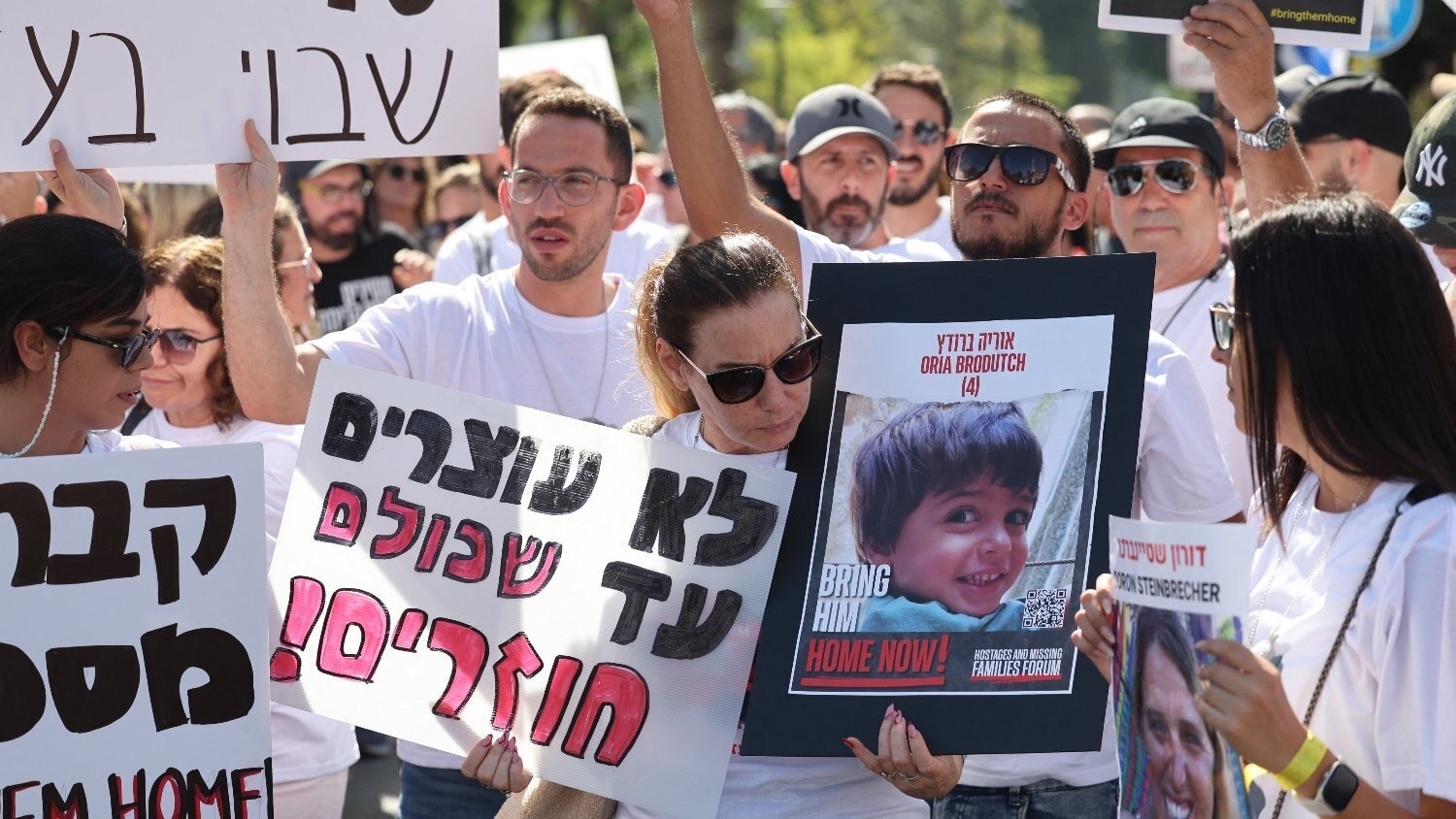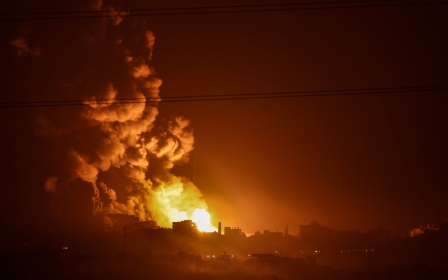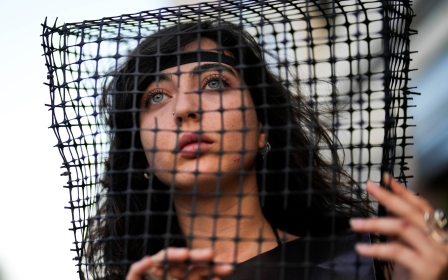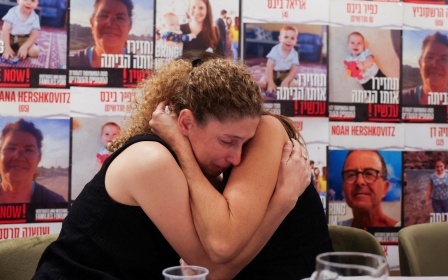Israel-Palestine war: Hamas and Israel were 'inches' away from deal on hostages

Hamas and Israel were “two inches away” from a hostage deal which would have resulted in the release of women and children held in Gaza after the 7 October attack, but the deal fell through when Israel launched a ground operation.
Sources with knowledge of the Qatari-led mediation told Middle East Eye that Hamas was willing to go through with the deal, but needed a guarantee from Israel that the hostages would be safe.
Hamas has claimed that 50 of the hostages are among thousands of people killed by the intense bombing campaign Israel has waged for three weeks, although this figure cannot be confirmed.
MEE asked Israeli officials for comment, but had not received a response at the time of publication.
Hamas said they also needed time to collect all the hostages, who are spread throughout Gaza and held by different militant groups and others who followed Hamas into southern Israel after the Israeli army’s Gaza Division collapsed.
New MEE newsletter: Jerusalem Dispatch
Sign up to get the latest insights and analysis on Israel-Palestine, alongside Turkey Unpacked and other MEE newsletters
“It did not seem to us the Israelis were willing to move on part of the deal,” said one source.
Hamas’s current offer is “all for all” - releasing all 229 confirmed hostages in exchange for 5,200 Palestinians in Israeli jails. If Israel does not accept this, the fallback offer is that Hamas is willing to negotiate the release of women, children and foreigners in return for an as yet unspecified number of Palestinian prisoners.
According to Addameer, an organisation supporting Palestinian political prisoners, there are currently 33 women and 170 children imprisoned in Israel.
Israel has not made a clear reply, according to several sources. But until now, neither the launch of ground operations nor Israeli Prime Minister Benjamin Netanyahu’s refusal to declare a ceasefire has stopped mediation efforts.
David Barnea, the head of Mossad, flew into Doha at the weekend to discuss a possible deal to release some hostages.
Follow our live blog for all the latest on the Israel-Palestine war
However, Qatar gave a clear warning on Tuesday night, after the bombing of the Jabalia refugee camp in northern Gaza, that its patience was not inexhaustible. At least 100 people were killed in the air strike, according to Palestinian officials.
Qatar's Ministry of Foreign Affairs said that the expansion of attacks on hospitals, schools, population centres and shelters for displaced people was “a dangerous escalation in the course of confrontations, which would undermine mediation and de-escalation efforts”.
The negotiations are more complex than those that led to the release of Gilad Shalit, the Israeli soldier captured by Hamas in 2006 and held hostage in Gaza until 2011, when he was freed in exchange for 1,027 prisoners.
A factor, this time, is whom the prisoners and hostages are released to. Many of the prisoners released by Israel as part of the Shalit deal have since been re-arrested. The only guarantee that this would not happen again is if Israel released the prisoners into Hamas’s custody in Gaza.
Hamas 'planned to capture soldiers'
Hamas had not planned on capturing the number of hostages that it ended up with, multiple sources told MEE.
Many of the hostages were not intended to be taken back to Gaza when the operation was planned by the Izz al-Din al-Qassam Brigades, the military wing of Hamas.
'Al-Qassam had in mind to take between 20 and 30 hostages. They had not bargained on the collapse of [Israel’s] Gaza Division. This produced a much bigger result'
– Source speaking to MEE
One source with knowledge of events on 7 October said: “Al-Qassam had in mind to take between 20 and 30 hostages. They had not bargained on the collapse of [Israel’s] Gaza Division. This produced a much bigger result.”
A second source confirmed this. He said Hamas sent in 1,500 fighters, expecting that most would be killed.
“Somewhere around 1,400 fighters came back,” said one source.
He said that as the fighters had expected to die, and as all resistance from the Israeli forces had crumbled, this force kept on advancing, attacking locations that were not on an original list of targets, and they ended up with a far larger number of hostages than they had planned for.
The initial strike force had accurate intelligence. It knew where the top commanders of the Gaza Division lived and went to their addresses. It knew the layout of military bases and the location of checkpoints.
Furthermore, it knew the time of the shift change at the Gaza Division’s barracks following the end of the Sukhot holiday on 6 October.
It launched the attack one hour after the shift change. Many of the troops were caught in their beds.
Sources said as many as 20 senior officers were taken hostage in this way.
MEE asked the Israeli army for comment but had not received a response at the time of publication.
The original attack plan, according to several sources, was to strike military targets and then make a quick withdrawal.
Hamas wanted to inflict maximum embarrassment on Netanyahu and get something to bargain with for a mass prisoner release.
“The plan was to assault the Gaza Division and not the kibbutz, because the Qassam intention was to capture soldiers and officers to finish the file of prisoners,” said one source familiar with the planning of the operation.
“The number of civilian hostages was as a result of the sequence of battle when a lot of people crossed the border.”
'Complete chaos'
While Hamas was ready for the war, it did not expect the attack to provoke anything more than limited retaliatory strikes on Gaza.
“The strike was supposed to be tactical, not strategic,” one source said.
Instead, fighters were free to cross between designated targets and for a couple of hours nobody was in control.
'Other forces, smugglers with weapons, lay people, criminals all flooded through the fence and we had a massacre'
– Source speaking to MEE
“Once that happened, other forces, smugglers with weapons, lay people, criminals all flooded through the fence and we had a massacre. That was why 15 Thai workers were kidnapped. It became complete chaos,” the source continued.
The Thai government says that 22 Thai nationals are being held hostage in Gaza and another 32 were killed in the 7 October attack.
Israel and its allies have blamed Hamas for the deaths of around 1,400 people in attacks on military bases, kibbutz communities and a music festival during the 7 October assault. Most of those killed were Israeli civilians, including many women and children.
Human rights groups have called for Hamas - which is a proscribed organisation in many western countries, including the US and the UK - and other Palestinian armed groups to be held accountable for what Amnesty International has described as “deliberate civilian killings, abductions and indiscriminate attacks”.
Amnesty said it had verified videos showing Hamas fighters abducting and intentionally killing civilians in and around Israeli residential communities.
It said it had also verified videos showing armed groups shooting at civilians at the Nova music festival, where at least 260 people were killed. Footage from the festival appears to show both heavily armed fighters in military uniforms and others who were armed but not in uniform involved in the attack.
Speaking on Monday from the Egyptian side of the Rafah border crossing to Gaza, Karim Khan, chief prosecutor at the International Criminal Court, said there were “active investigations ongoing into the crimes allegedly committed in Israel on the seventh of October”.
One source said that Mohammed Deif, commander of the Qassam Brigades, gave orders prior to the operation that women, children and the elderly should not be killed.
“The only targets of Al Qassam were military. It is un-Islamic to kill women, children and the elderly,” the source said.
Another source said Hamas considered itself a proper army: “They have a uniform. They are prepared. They don’t go to war in polo shirts and jeans. Most of the killing was done randomly.”
US-Qatar tensions
Four hostages - two American-Israeli women and two Israeli women - have been released by Hamas so far, as a result of mediation efforts involving Qatar and Egypt. On Monday, Israeli officials said a female soldier held hostage in Gaza had been rescued by Israeli forces.
On Monday, families of the remaining Israeli and dual-national hostages appealed to Sheikh Tamim bin Hamad Al Thani, the Emir of Qatar, for help in securing the release of their relatives held in Gaza.
Qatar has bridled at the mixed messages from Israel and the US about its contacts with the political bureau of Hamas, which is housed in a complex in Doha.
Officially, US Secretary of State Antony Blinken has been putting pressure on Qatar to close it. A US official was quoted in Washington as saying Qatar told the US it was open to reconsidering the presence of Hamas once the crisis to secure the release of the hostages is resolved.
“It’s the other way round,” a source with knowledge of the thinking of the Qatari government told MEE.
“The benefactors of having this channel of communication open are Israel and America. In Blinken’s meeting with Doha, he was asked if he was going to recommend closure. The Qataris told him very clearly: they don’t have a relationship with Hamas. They have a relationship with the US.”
When the Israeli Foreign Minister Eli Cohen criticised Qatar’s role at the United Nations, the response from Doha was immediate. It threatened to pull out of the negotiations.
Cohen had alleged: “Qatar, which finances and harbours Hamas leaders, could influence and enable the immediate and unconditional release of the hostages held by the terrorists. You, members of the international community, should demand from Qatar to do just that.”
Within 24 hours Israel had backtracked.
National Security Adviser Tzachi Hanegbi wrote on X, the social media platform formerly known as Twitter: “I’m pleased to say that Qatar is becoming an essential party and stakeholder in the facilitation of humanitarian solutions. Qatar’s diplomatic efforts are crucial at this time.”
Middle East Eye delivers independent and unrivalled coverage and analysis of the Middle East, North Africa and beyond. To learn more about republishing this content and the associated fees, please fill out this form. More about MEE can be found here.




